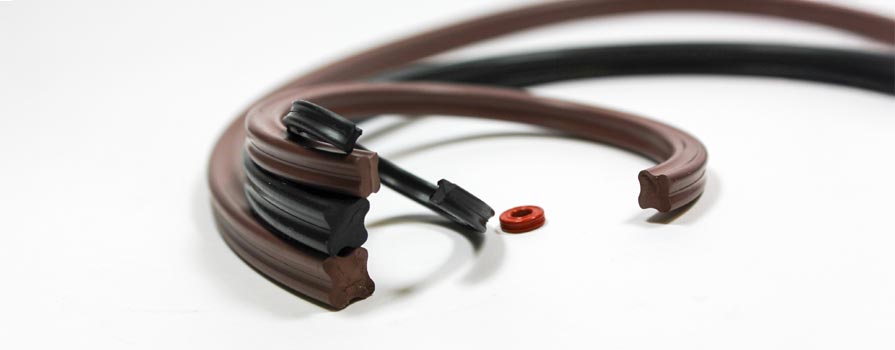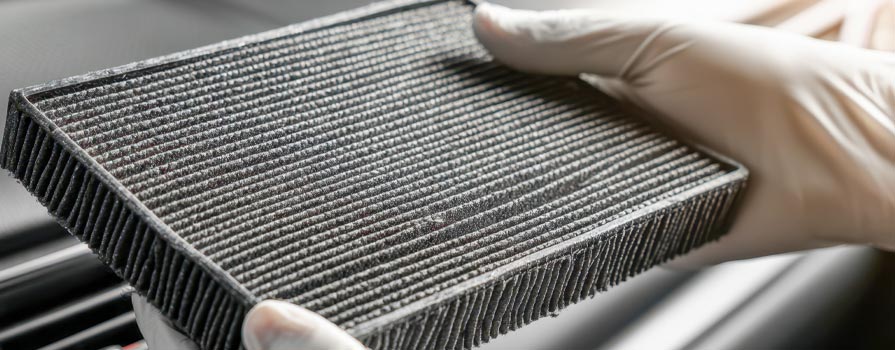Industrial chillers are commonly used to circulate a constant temperature fluid in a closed loop with liquid cooled instruments and tools in order to increase process repeatability and reproducibility.
How Recirculating Chillers Maintain Constant Temperatures
The basic components of a chiller consist of a pump to circulate the fluid, a reservoir to hold a volume of cold fluid in the chiller, a refrigeration system to cool the fluid, and a temperature control module. (See Figure 1.)

A standard, off-the-shelf temperature controller can be used as a temperature control module. Controllers are available from any number of manufacturers with a variety of options. All include a temperature display, are panel mounted, and accept temperature inputs from Resistance Temperature Detectors (RTDs) or thermocouples. Various communications options are also available. A helpful feature of many controllers is a Proportional–Integral–Derivative (PID) auto-tune function. This allows the user to let the controller calculate the optimum response to system disturbances. Disturbances come in the form of varying process loads, set point changes, and noise. After auto-tuning is completed, the user may need to make some additional adjustments to the tuning parameters to ensure that the temperature of the process fluid is within the process control limits. This does not necessarily complete the work of tuning the chiller with the tool. The user must be aware that the auto-tune feature will attempt to tune the temperature controller at the one operating point being evaluated.
Process dynamics are often affected by conditions that only exist at certain times or under specific circumstances. If these special conditions can be sensed or predicted in some way, a method of adaptive (feed forward) control is needed to supplement the reactive (feedback) control used in a typical control scheme. Chillers serving applications with these advanced needs are often better suited by the use of Programmable Logic Controllers (PLCs) and Operator Interface Terminals (OITs). (See Figure 2.)

The use of a PLC provides flexibility to satisfy the needs of a more demanding control environment. It allows for the seamless integration of non-process temperature related process measurements such as pressures, flow rates, ambient temperature, etc. or critical events like pump overload, safety shut down, etc. in an adaptive control scheme. PLCs also provide a means of data collection and communication. They are easily connected to host systems via a myriad of communications options.
Various field bus connections are available (Profibus, DeviceNet, Lonworks, etc.) as well as non-proprietary serial and Ethernet links. This allows the user to better integrate the chiller with the tool. While temperature control is a critical function for many industrial processes, temperature stability is critical for some processes as well. Increased stability generally correlates to increased cost.

Many applications require a temperature that is stable to ±0.5°C of a given set point temperature at a specified heat load. This level of stability can be accomplished by measuring the temperature in the reservoir and cycling an on-off valve in the refrigeration system. (See Figure 3.) A basic PID algorithm in the temperature control module cycles the on-off valve as needed. The reservoir provides a volume of constant temperature fluid to help reduce the impact of any small temperature changes due to heat load changes from the tool.
While the reservoir helps maintain a constant temperature for the fluid being supplied to the tool, it also masks large temperature spikes in the fluid returning from the tool. These changes result from varying heat loads. For example, a laser in operation may add a constant 300 W of heat load to the fluid for 5 minutes. The laser power may then run at 500 W for 5 minutes, and then be brought back down to 300 W for another 5 minutes. This cycle may repeat over and over. Increasing the heat load by 67% will suddenly change the fluid temperature returning to the chiller. Since the fluid temperature in the reservoir changes more slowly, the temperature control module is slower to respond to these changes.
Temperature stability can be increased for dynamic processes by measuring the temperature of the fluid at the exit of the refrigeration system and prior to the reservoir. (See Figure 4.) The temperature control module sees the spikes in fluid temperature and can respond accordingly. The temperature stability of the fluid being supplied to the tool can be doubled by simply changing the measurement point. (See Figure 5.)


It is important to note that if a chiller is designed for ±0.5°C stability using an on-off valve (such as a refrigeration solenoid valve), increasing the stability further will cause more frequent cycling and reduce the life of the valve. This issue can occur when using the auto-tune feature on an off-the-shelf temperature controller. Therefore, the chiller should only provide the stability needed to keep the process in control.
Another common issue related to chiller temperature control is environmental or ambient temperature loss between the chiller and the tool. This typically occurs when the process fluid is much hotter or colder than room temperature and there is a significant amount of distance and piping between the chiller and the tool. Sometimes the chiller is even on a different floor than the tool itself. For example, a fluid exiting the chiller at 15°C may warm up to 20°C by the time it reaches the tool due to room air raising the fluid temperature. The process requires fluid to be delivered to the tool at a constant temperature of 15°C, not 20°C. For this issue, an offset can be entered into the temperature control module of 5°C. A set point temperature of 15°C is entered for the chiller, but the chiller will actually control to 10°C. The process will get the needed 15°C fluid and the chiller will communicate a value of 15°C on the display or through communications.
There are a number of processes that are more sensitive to temperature, such as those used in medical devices, certain lasers, and semiconductor equipment. For recirculating chillers, stability to ±0.1°C of a given set point temperature at a specified heat load is not uncommon. However, as previously mentioned, it is recommended that you ensure that this level of stability is really needed for a given process since there can be an increased cost for either chiller components or development. A PID algorithm in the temperature control module will control either an on-off valve or a modulating valve in the refrigeration system. A modulating valve is typically a stepper valve, providing finer control at the operating point. It is also not limited to a specific number of cycles over the life of the valve like an on-off valve. The modulating valve does take longer to fully open and close as compared to an on-off valve. Therefore, it will take longer for the chiller to ramp to a new temperature given a step change in the set point.
Temperature control can be complicated in chillers when controlling multiple fluid loops or operating over a large temperature range with highly variable heat loads. In this case, PLCs and OITs are used since they can be programmed to control multiple control devices and have multiple PID loops. These devices provide ultimate flexibility as they are only limited by the program created for them.
In summary, it is important to determine system operating points and required stability carefully. Incorrectly specifying these items may result in the tool temperature being out of control and/or unnecessary costs being added on. An experienced chiller manufacturer can provide the correct custom or standard chiller selection based on the right inputs.
Using RS232 Communication to Your Advantage
The future will bring customer satisfaction to a new demanding level. Customers need service to become a seamless part of their organization. Cooling systems and recirculating chillers inherently measure vital information about an entire system’s status through internal sensors and controls. Because of this, cooling systems and chillers can be effectively used to communicate system problems via a RS232 interface. This wealth of information can help maintain and preserve your equipment throughout the entire system.
In its simplest form, RS232 can be used to control basic chiller functions and check if the system has any failures. Most people simply use RS232 to turn the unit on and off, and to control basic functions such as the set-point. However, since nearly all functions of the chiller are available through the RS232 interface, its capabilities are far greater than that.
Temperature control can be complicated in chillers when controlling multiple fluid loops or operating over a large temperature range with highly variable heat loads. In this case, PLCs and OITs are used since they can be programmed to control multiple control devices and have multiple PID loops. These devices provide ultimate flexibility as they are only limited by the program created for them.
In summary, it is important to determine system operating points and required stability carefully. Incorrectly specifying these items may result in the tool temperature being out of control and/or unnecessary costs being added on. An experienced chiller manufacturer can provide the correct custom or standard chiller selection based on the right inputs.
For example, Boyd’s recirculating chillers can monitor and communicate pressure changes. When a system is installed and operational, the existing pressure reading on the liquid side can be captured and used as a reference point to constantly monitor the pressure on the liquid side. If your equipment sees a sudden trend of increasing or decreasing pressure through any period of time or days, for example due to plumbing problems, corrosion or blocked filters, then you are alerted to any potential problem before it occurs.
Slow but steady changes in temperature are also indicators of problems to come. If a system is slowly losing its ability to maintain temperature during normal functioning, it could mean that the electronic components being cooled are overheating or not operating due to internal failures, or perhaps the chiller is losing performance. Boyd chillers have the capability of measuring temperature changes as small as 1/100 of a degree and communicating them through the RS232 interface.
The development of start-up system tests, or tests that can be run periodically using the measurement and control features of the chiller, is an extremely effective way of identifying problems before they occur and cause downtime. Measuring temperature, pressure and other parameters using the chiller’s integral sensors and the RS232 interface avoids the expense and complication of integrating additional temperature and pressure sensors, and the early diagnosis and repair of faults or system problems saves money and downtime.
Download RS232 Communication Software and copy to your hard drive. Extract to a single folder (such as your desktop); do not extract the KodiakPCHost.cab file. Because of firewalls, please rename the setup.exr to setup.exe. Run the setup.exe file. If pop up displays a message saying a file on your system is newer than what is being installed, choose to keep the newest file. After that, make sure your com 1 port is set to 9600 baud, 8 data bits, 1 stop bit, no parity. Should be no software flow control as well. Please note, when extracting the zip file using WinZip, the version should be at least 9.0. The program is a simple interface to represent the main screen and controls. You must turn off your pop-up blocker to allow for downloads.
Learn more about Recirculating Chillers where can implement intelligent system controls like RS323 Communications.






